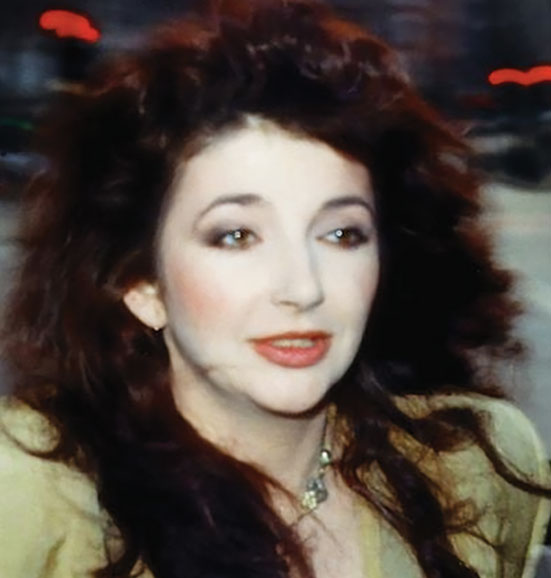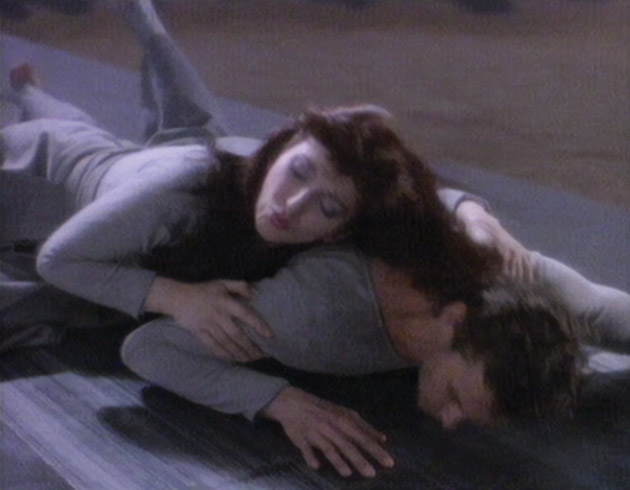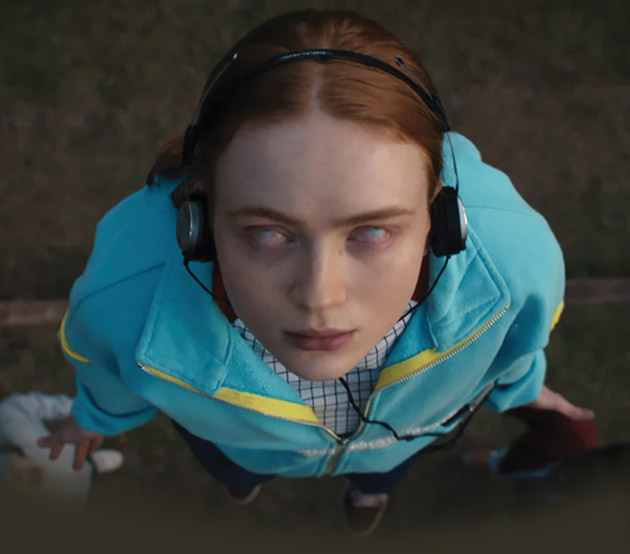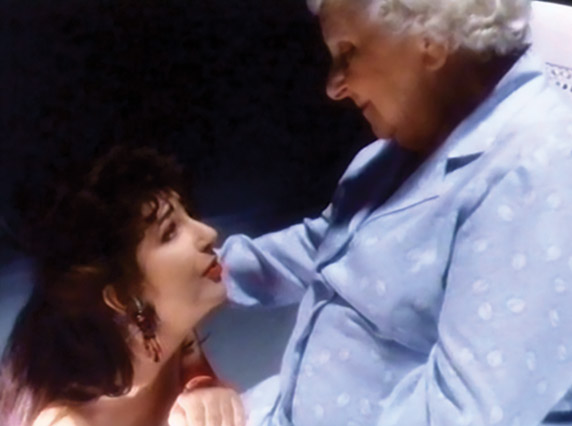|
To share this story on your social media page click below:
A DECADES old song with other worldly lyrics has introduced a new generation to the music and spirituality of Kate Bush.
 |
|
|
|
KATE BUSH professed her belief in angels.
(Photo: Philip Chappell aka squidney)
|
|
|
The singer-songwriter blazed a trail for female artists in the 1980s. In recent years her album releases have become sporadic. However, the use of her single Running Up That Hill in a hit American TV series featuring telekinesis (objects’ supernormal movement), remote viewing, parallel worlds and monsters has catapulted her back into the public eye. BBC music correspondent Mark Savage commented: “The remarkable resurgence of Kate Bush’s 80’s classic Running Up That Hill has culminated in the song going to number one in the UK singles chart.
“Originally released in 1985, the song has enjoyed a new lease of life after featuring in the Netflix sci-fi show Stranger Things.”
Kate said she was “overwhelmed by the scale of affection” for her song, adding: “It’s all happening really fast, as if it’s being driven along by a kind of elemental force. I have to admit I feel really moved by it all.”
The achievement comes 44 years after Kate last reached number one with her debut single Wuthering Heights in which Cathy is a departed spirit being looking for her lost love, Heathcliff. It is based on the 1847 novel of the same name by Emily Brontë.
Running Up That Hill originally appeared on Kate’s celebrated fifth album Hounds of Love, which she self-produced and composed largely with a groundbreaking digital sampling synthesiser.
Mark Savage said that the American TV series had introduced Running Up That Hill “to a new generation, but the scale of its success has taken everyone by surprise.
| |
|
 |
|
|
A SCENE from "Running Up That Hill" music video
(Photo: Kate Bush/EMI)
|
“It is currently the most-streamed song in the world, with more than 57 million global plays last week.” In 1992 Kate explained the sentiment behind Running Up That Hill, saying: “I was trying to say that a man and woman can’t really understand each other because we are a man and a woman.
“If we could swap our roles and be in each other’s place for a while, I think we’d be very surprised! It would lead to greater understanding.
“I thought the only way it could be done was by a deal with the Devil. Then I thought: ‘Well no, why not a deal with God? Because that’s so much more powerful’.”
She once told Q magazine: “By being able to create, you can somehow express yourself in a way that maybe you can’t in the ordinary realms of life. I really feel it’s connected to religion – real religion… “So many artists are looking for God. This is where we find the voice to try and speak. It’s also a kind of self-therapy, trying to heal yourself.”
Talking about spirituality in her work, Kate said: “Breathing was one of my first what I would call spiritual songs. The subject matter isn’t necessarily, but the spark is.
“When I was writing it, it felt like: ‘Hang on. I don’t think I’m writing this. This is a bit too good for me!’
“Rather than the song being my creation, I was a vehicle for something that was coming through me.”
 |
|
|
ACTOR Sadie Sink plays Max Mayfield in “Stranger Things.”
(Photo: Netflix)
|
|
|
Kate has only rarely given interviews, but music reviewers have pored over her songs, searching out esoteric meanings behind the words. Some of the sentiments are clear. The Yeti is the subject of Wild Man, (2011) whilst in Waking the Witch (1985) a woman is persecuted by witch hunters.
In Blow Away (1979), she names departed musicians and passing to the Other Side, written as a comfort to those who have a fear of dying. The same year, the lyrics of Them Heavy People were a tribute to spiritual leaders and philosophers.
Kate has produced twenty albums including compilations, been nominated for three Grammy Awards and received the CBE from the Queen in 2013 for her services to music.
After the Netflix show, Running Up That Hill became Kate’s first US Top 10 single and also made number one in the Australian charts.
Another spiritual song by Kate was Lily. It originally appeared on her seventh album The Red Shoes and was devoted to London healer Lily Cornford, with whom Kate was a close friend in the 1990s. “She was one of those very rare people who are intelligent, intuitive and kind,” Kate said about Lily. “I was really moved by Lily and impressed with her strength and knowledge, so it led to a song, which she thought was hilarious.”
|
|
|
THE GAYATRI MANTRA
“Oh thou, who givest sustenance to the universe
From whom all things proceed
To whom all things return
Unveil to us the face of the true spiritual sun
Hidden by a disc of golden light
That we may know the truth
And do our whole duty
As we journey to thy sacred feet.”
|
|
|
 |
|
|
|
KATE Bush is pictured with Lily Cornford in the
music video for "Lily" - part of the movie
"The Line, The Cross and The Curve"
(Photo: Kate Bush/Picture Music International)
|
|
|
|
The song starts with the Gayatri mantra – one of the oldest and most powerful of Sanskrit mantras – spoken by Lily. Kate and Lily appeared together in a video for the song as part of the singer’s 1993 film The Line, the Cross and the Curve.
Another time, Kate said that Lily “believes in the powers of angels and taught me to see them in a different light, that they exist to help human beings and are very powerful as well as benevolent forces.
“She taught me some prayers that I found very useful, particularly in my line of work… “I guess I wanted to pass on her messages about angels. We all have them; we only have to ask for help.”
Born in 1906 in East London, Lily worked as an accountant until her retirement at the age of 65, when she became a full-time healer. Her main interest was in colour healing. She passed on in 2003.
The song also opened Kate’s award-winning sold-out run of 22 concerts called Before The Dawn at the Hammersmith Apollo in 2014. These were her first full concerts since touring in 1979, a gap of 35 years. Tickets sold out in 15 minutes.
|

